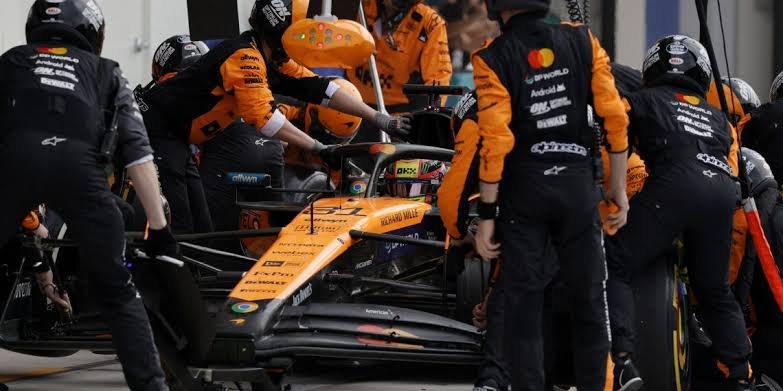The Fédération Internationale de l’Automobile (FIA) has rendered a definitive ruling on McLaren’s contentious brake duct innovation, officially deeming it lawful for continued use throughout the current Formula 1 campaign. The long-awaited decision, revealed after extensive technical evaluations, comes on the heels of growing dissent and suspicion from rival teams, particularly during the aftermath of the Belgian Grand Prix. While acknowledging the design’s radical interpretation of the rules, the FIA determined that McLaren’s implementation did not infringe upon the specific articles regulating aerodynamic components, thus granting the British team a green light that may translate into a considerable competitive edge.
At the heart of the dispute lies the extraordinary intricacy of McLaren’s brake duct architecture. The configuration features an elaborate internal system of vanes and airflow channels, markedly more advanced than those seen across the paddock. Critics accused the team of crafting a design that cunningly manipulated airflow to generate an aerodynamic advantage beyond what is permitted for brake cooling apparatuses. This sparked heated discourse in the F1 community, with engineers and analysts divided between admiration for McLaren’s ingenuity and condemnation of what some perceived as regulatory sleight of hand.
The FIA’s verdict underscores the inherent difficulty of monitoring innovation in a sport governed by rapidly evolving technologies. According to reports, the ruling drew attention to the near-impossibility of isolating performance gains derived solely from brake cooling versus those gained aerodynamically. This dilemma illuminates the blurred lines within the regulations and may prompt a re-examination of rule language ahead of the 2024 season. The FIA now faces mounting pressure to fortify its technical code in order to preempt similar interpretive conflicts moving forward.
This outcome could very well catalyze a paradigm shift in car development strategies across the grid. The FIA’s acceptance of McLaren’s design may embolden competitors to pursue analogous innovations, exploiting latent ambiguities within the regulatory framework. Conversely, some outfits may retreat from experimental concepts to avoid drawing scrutiny or risking disqualification, choosing instead to enhance existing components within more familiar legal boundaries.
For McLaren, the ruling is a significant vindication. Not only does it permit the team to press forward with a potentially transformative design, but it also signals a rare regulatory triumph amid a season fraught with challenges. As the team navigates a crowded midfield battleground, the FIA’s endorsement may serve as a pivotal boost, reaffirming that technical daring still holds value in Formula 1’s relentless quest for competitive supremacy.

Go McLaren ! ”Those Who DARE – WIN !” Legally Too !
AMEN –